Learn the Past Perfect Continuous Tense
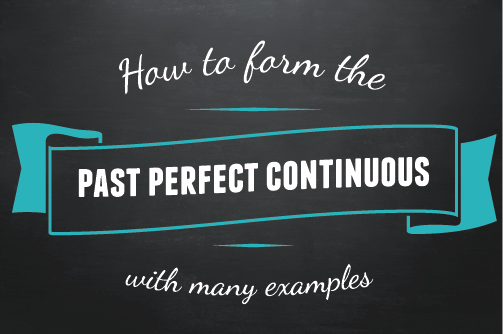
Let's learn how to form the past perfect continuous tense.
This tense is formed using the auxiliary verb "had" plus the past participle of the verb "be" (been) plus the -ing form of the main verb. We'll learn how to make positive and negative forms, short forms (contractions) and questions.
[Note: Click here to learn how to use the past perfect continuous.]
Past perfect continuous affirmative statements
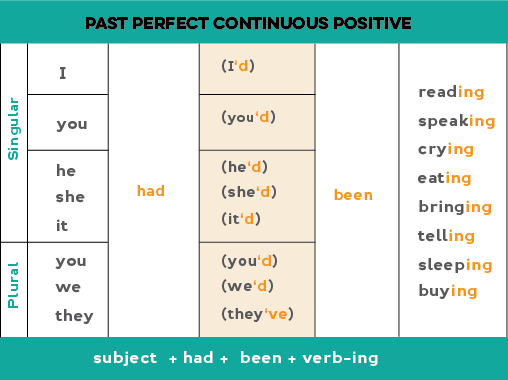
To form the past perfect continuous: we use "had" + the past participle of "be" (been) + the -ing form of the main verb.
Note: You can also use contractions: I had = I'd; you had = you'd; he had = he'd; she had = she'd we had = we'd; they had = they'd
To form the continuous or -ing form: add "-ing" to the infinitive form of regular verbs. We use the same form for each subject (e.g., I, you, he). [click here if you need to review -ing spelling changes.]
- My grandfather had been feeling great until yesterday.
- I had been living in the dorms during my first two years at university.
- She'd been seeing him for a few years before they broke up.
- I'd been bringing sandwiches to work for years.
- I could see that he had been crying.
- My sister had been buying new clothes with her credit cards every month.
Past perfect continuous negative statements
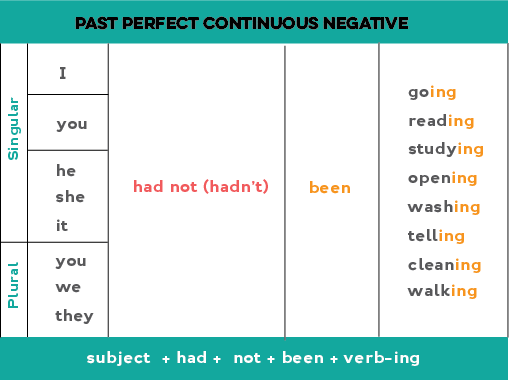
To form the negative, simply add "not" after "had":
- subject + had + not + been + -ing form of main verb.
We can also use the contractions hadn't (had not = hadn't)
Examples:
- They hadn't been speaking to each other for years.
- They had not been taking good care of their health.
- Thankfully, I had not been smoking for a year before I got pregnant.
- I hadn't been drinking alcohol for a long time either.
- My dog hadn't been sleeping well before he died.
- Our children had not been doing their chores so we took away their iPads.
Yes / no questions
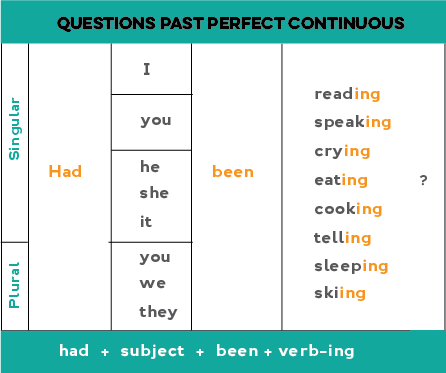
To form questions use:
- Had + subject + been + -ing form of main verb ?
Examples:
- Had you been dating him for very long?
- Had that dog been barking a lot in the past few weeks?
- Had they been sleeping late during the summer?
- Had Marie been trying to lose weight when she got sick?
- Had you been working at your job for a long time before you quit?
- Had the children been acting strange?
Wh- questions
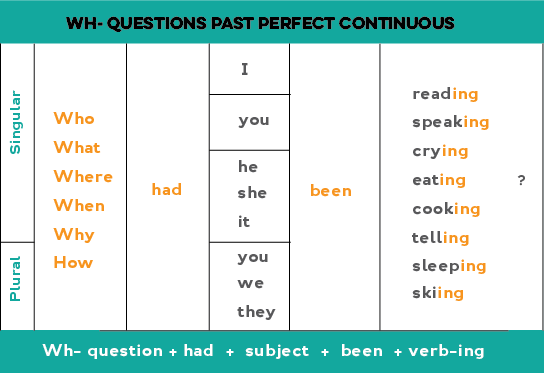
Notice the word order. The wh- question word comes before "had" and then the past participle of "be" (been) and then -ing of main verb.
Examples:
- How long had you been living in Berlin before you got married?
- Where had your father been staying before he went into the nursing home?
- Why had the bus driver been talking on the phone?
- Who had they been telling our company secrets to?
- What had Sophie's mother been cooking when the fire started?
- How much of your salary had been going into savings?
Check back for exercises that will help you practice this tense in its different forms.
Click here to learn when to USE the past perfect continuous.
- Home Page ›
- Main Grammar Page ›
- Use: Past Perfect Continuous >
- Form: Past Perfect Continuous
